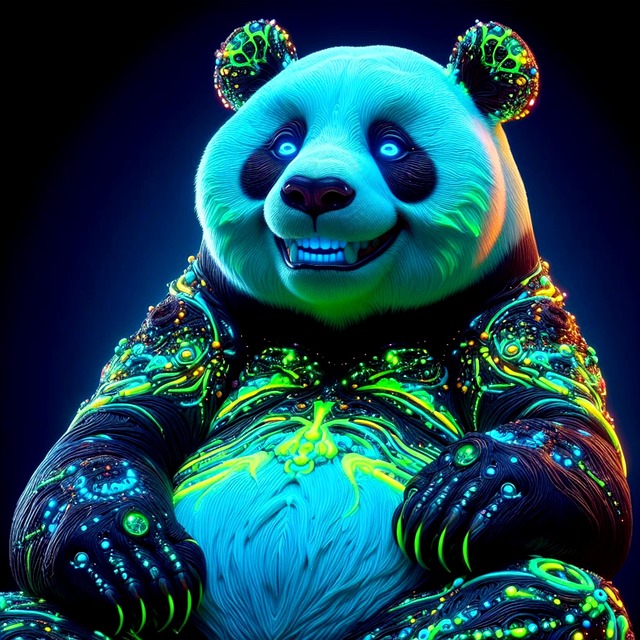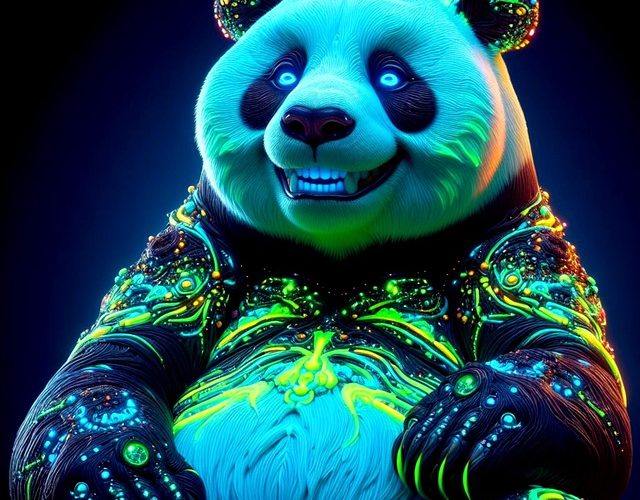At the heart of this glowing magic is a special chemical reaction that occurs in certain organisms. Think of it as nature’s sparkly version of a superhero power! Animals like fireflies, certain jellyfish, and even some fungi possess this unique ability thanks to a substance called luciferin. When luciferin reacts with oxygen in the presence of an enzyme called luciferase, it creates that breathtaking glow. It’s as if they are holding tiny flashlights, guiding them through the dark!
So, why go all glowy in the first place? Well, the reasons can vary. Some creatures, like fireflies, use their light to attract mates. Imagine trying to catch someone’s eye at a crowded party—glowing is like wearing a bright neon sign! Others, like certain marine animals, utilize their glow to confuse predators or lure in unsuspecting prey. They’re like the ninjas of the animal kingdom, using stealthy lights to get ahead.
Even more fascinating is how some organisms can change the color of their glow based on their environment. It’s nature’s version of a mood ring! This ability helps them communicate or adapt to their surroundings, making it easier to survive in the wild.
So, the next time you catch a glimpse of something glowing at night, just remember—there’s a whole world of secrets lighting up the darkness!
The Science Behind Bioluminescence
Bioluminescence is the result of a chemical reaction within living organisms. Picture it like a magical light show; it’s life transforming chemical energy into visible light. This reaction involves a light-emitting molecule called luciferin and an enzyme known as luciferase. When these two come together, voila—light happens! Almost like mixing the perfect ingredients for a fabulous meal, these components create a stunning display that can leave you in awe.
You might wonder why nature has packed some creatures with this glowing ability. Well, it serves various purposes. For some, like fireflies, it’s a way to flirt—it’s their version of a romantic glow-up! For others, like deep-sea fish, it’s an essential survival tool, dazzling potential prey or confusing predators. Imagine being in a dark room and flipping a switch—suddenly, it’s light everywhere! That’s what bioluminescence does for these creatures in their dim habitats.

What’s even cooler is that bioluminescence isn’t just limited to the oceans. You can find it in fungi, insects, and even some bacteria. Think of it as nature’s very own neon lights, illuminating the world in ways that constantly surprise us. From glowing mushrooms in a forest to vibrant plankton in the ocean, these natural lights are a reminder that there’s more to our planet than meets the eye, an endless universe of wonder waiting to be explored!
How It Helps Animals Survive in Nature
Animals have developed incredible adaptations that allow them to blend into their surroundings, almost like nature’s very own camouflage artists. Take a chameleon, for example. With a flick of its tongue and a shift in color, it becomes practically invisible to both predators and prey. This ability isn’t just a cool party trick; it’s a life-saver, proving that blending in allows these creatures to hunt effectively and avoid becoming someone else’s dinner.
Moreover, think about the cunning strategies used by wolves when hunting in packs. These social animals coordinate their movements in a choreographed effort reminiscent of an intricate dance, ensuring they corner their prey. It’s teamwork at its finest—by communicating and planning together, they increase their chances of a successful kill. Wouldn’t you agree that skills like that are fundamental to survival?
Even the tiniest creatures have their own strategies. Consider the industrious ant; it may be small, but it exhibits incredible strength and resilience, carrying objects many times its size. Through teamwork and remarkable endurance, ants can create vast colonies that can thrive in harsh environments.
In the grand scheme of nature, every animal plays a role, with survival methods as diverse as the habitats they inhabit. Isn’t it fascinating to think about how these skills have evolved over time, allowing species to adapt and flourish in the face of adversity? Each day is a battle for survival, and animals have mastered the art of resilience in captivating ways.

























Ajouter un commentaire